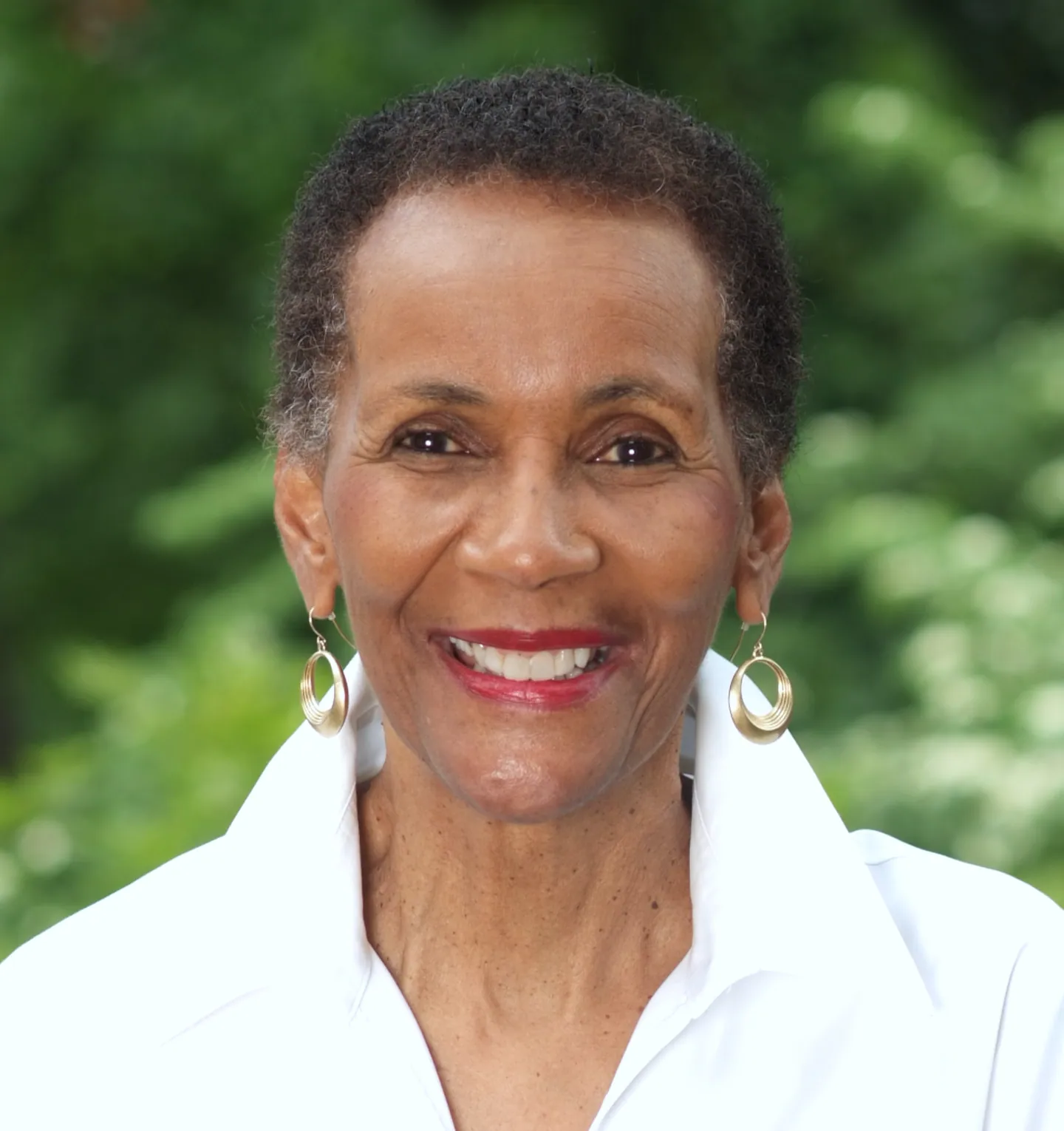
So in 1980, she took a trip, using an IRS refund to spend more than two weeks in the Caribbean. She meditated and read, poring over self-help books like “The Nature of Personal Reality.” And by the time she returned home, she had a new dream: to quit her job and become a writer.
Ms. Clair, who died Sept. 5 at 86, did just that. Overcoming skepticism from friends and teachers – including one instructor who told her she was “too old” to try to make it as an author – she went back to school, earned a master’s degree in creative writing from American University, and wrote lyrical, image-rich poems and stories that frequently explored love, family, and the pangs of young adulthood.
Drawing on her upbringing in Jim Crow-era Kansas City, Kan., she gained national exposure with “Rattlebone,” her first major work of fiction. Set in the 1950s, in a Midwestern Black community modeled after the neighborhood in which she was raised, the book established Ms. Clair as “a rare voice” in American literature, said author W. Ralph Eubanks, who often writes about race and identity.
“So much of white America has a one-dimensional idea of blackness. And she was trying to capture it in all its complexity,” Eubanks said in a phone interview. “I don’t think people were ready for it.”
While taking inspiration from Gloria Naylor’s “Women of Brewster Place” and Louise Erdrich’s “Love Medicine” – books that read like novels but were told through interlocking stories – Ms. Clair focused “Rattlebone” on a young girl named Irene. Her new teacher, October Brown, has caught the eye of Irene’s father, causing a “no-name invisible something” to settle over her parents’ marriage.
“The driving idea was to tell the story of a Black girl coming of age – somewhat naive in ways and wise in others – who was just a real person trying to become an adult,” Ms. Clair told Eubanks, who examined the book’s legacy in a 2023 essay for the Sewanee Review. While Black characters had often been featured in stories “about suffering and about slavery,” Ms. Clair noted, “I just wanted her to be a person trying to go to the corner market to get herself a Popsicle, the way I did in my childhood.”
The book drew on her memories of a near-biblical flood, a deadly plane crash, and a white woman ambling through her Kansas City neighborhood, trying to convert children to Catholicism. In its telling, “Rattlebone” combined folksy, naturalistic language with passages of pure poetry, as when Irene describes a trip to the river:
“Down the soft slope above the highway we scooted, and when the whiz of cars broke, we flew across the highway and ran down the muddy hollow to the plain of wild onion, garlic, asparagus, and no telling what kinds of snakes to the place where the stand of short trees leaned, and the noisy rush of cars gave way to the noisy rush of river to come.”
Although sales were modest, “Rattlebone” was praised by critics as well as writers, with novelist Ann Patchett hailing the collection’s “indelible characters” and “enormity of heart.” “Each skillful plot twist, each new, wonderful character has the effect of a sip of literary love potion,” wrote New York Times reviewer Veronica Chambers. “There is magic dust sprinkled over each and every page.”
Gradually, however, the book fell out of print and out of the cultural conversation. That began to change in 2022, after the collection was reissued by McNally Editions, an independent publisher. A year later, Daunt Books reissued “Rattlebone” in Britain, prompting a review in the Observer newspaper in which journalist Nick Duerden called the book “a small, perfectly formed classic.”
“It deserves to be widely read, a set text, cherished,” he added.
Friends and family said Ms. Clair was gratified by the burst of late-in-life attention, although fame was never her goal. She had just wanted to write, she told The Washington Post in 1994, explaining how she appreciated the mere act of artistic creation – “being in my bedroom and making these things happen on the page.”
“It was just amazing you could sit there for three hours,” she added, “and then, before you knew it, you had six lines of something that made sense.”
For Ms. Clair, the literary life was a far cry from what she described as her “not-so-happy childhood” in Kansas City, where she was born Maxine Deloris Smith on Feb. 18, 1939. The second of nine children, she grew up in a poor family – accustomed to hand-me downs and boiled dinners – and attended segregated schools in what she remembered as a vibrant, tight-knit Black neighborhood. Her father worked in construction, and her mother looked after the family, later getting a job at Hallmark.
Ms. Clair would join her mother, a pianist, in sing-alongs at home. (Years later, when she had children of her own, she made up songs to sing to them on the guitar.) But she said she had little interest in literature until high school, when an English teacher introduced her to the sonnets of Elizabeth Barrett Browning, whose work Ms. Clair admired for its formal beauty, even as she struggled to see her own reflected in verse.
Enrolling at the University of Kansas, she trained as a medical technologist – she had an affinity for science but concluded that as a Black woman in that era, she would never be able to make it as a doctor – and became the first person in her family to graduate from college, receiving a bachelor’s degree in 1962.
By then, she had married her first husband, Kansas basketball standout Bill Bridges, who became a three-time all-star in the NBA and won a championship with Golden State.
In 1967, she moved to Washington with her second husband, Joseph Clair, who had enrolled in law school at Howard University. Both marriages ended in divorce, and Ms. Clair worked at what is now Children’s National Hospital before beginning her graduate work in creative writing.
The year she published her first book, the 1988 poetry collection “Coping With Gravity,” she was holding down four part-time jobs, three as a writing teacher and one as a medical technologist. “That’s called dues-paying,” she told the Kansas City Star.
Boosted by “Rattlebone,” she landed a Guggenheim Fellowship that she used to write “October Suite,” a 2001 novel continuing the story of October Brown. She also became a tenured English professor at George Washington University, where she taught until her retirement in 2008.
Ms. Clair later worked as a reiki practitioner, championing an alternative healing technique that originated in Japan, and in 2014 published a nonfiction book, “Imagine This: Creating the Work You Love,” that offered advice on creativity.
Even after she was diagnosed with multiple myeloma about six years ago, “she couldn’t sit still,” said her daughter, Adrienne Clair, recalling how her mother would often stroll, with support from a walker, from her apartment in Northwest Washington to Washington National Cathedral.
Her death, at a hospital in Washington, was confirmed by her daughter.
She also leaves a son from her first marriage, Stephen Bridges; two children from her second: Michael and Joe Clair; two brothers; five sisters; six grandchildren, and three great-grandchildren.
“I wrote a poem once about why I love winter,” Ms. Clair told the Tribune in 1994, reflecting on the publication of “Rattlebone.” “About the slick bark of cherry trees, about the smell of nutmeg and cabbage. Because winter holds things down, you have to push against it.”
“I was really accustomed to pushing against adversity,” she added. “There was something attractive about that. And suddenly the adversity is not there and it’s so strange. But it’s great. I am no longer waiting for my life.”



